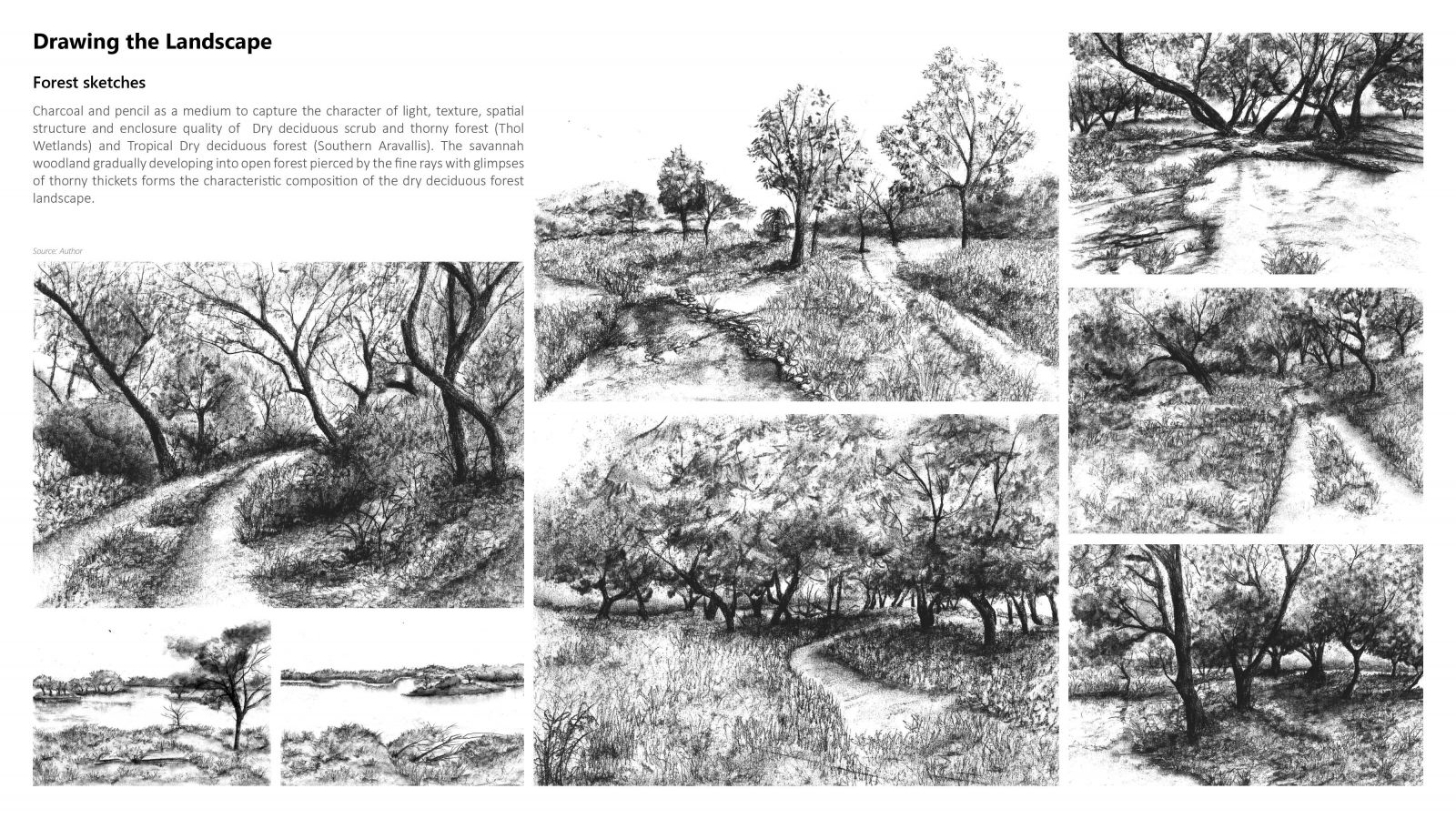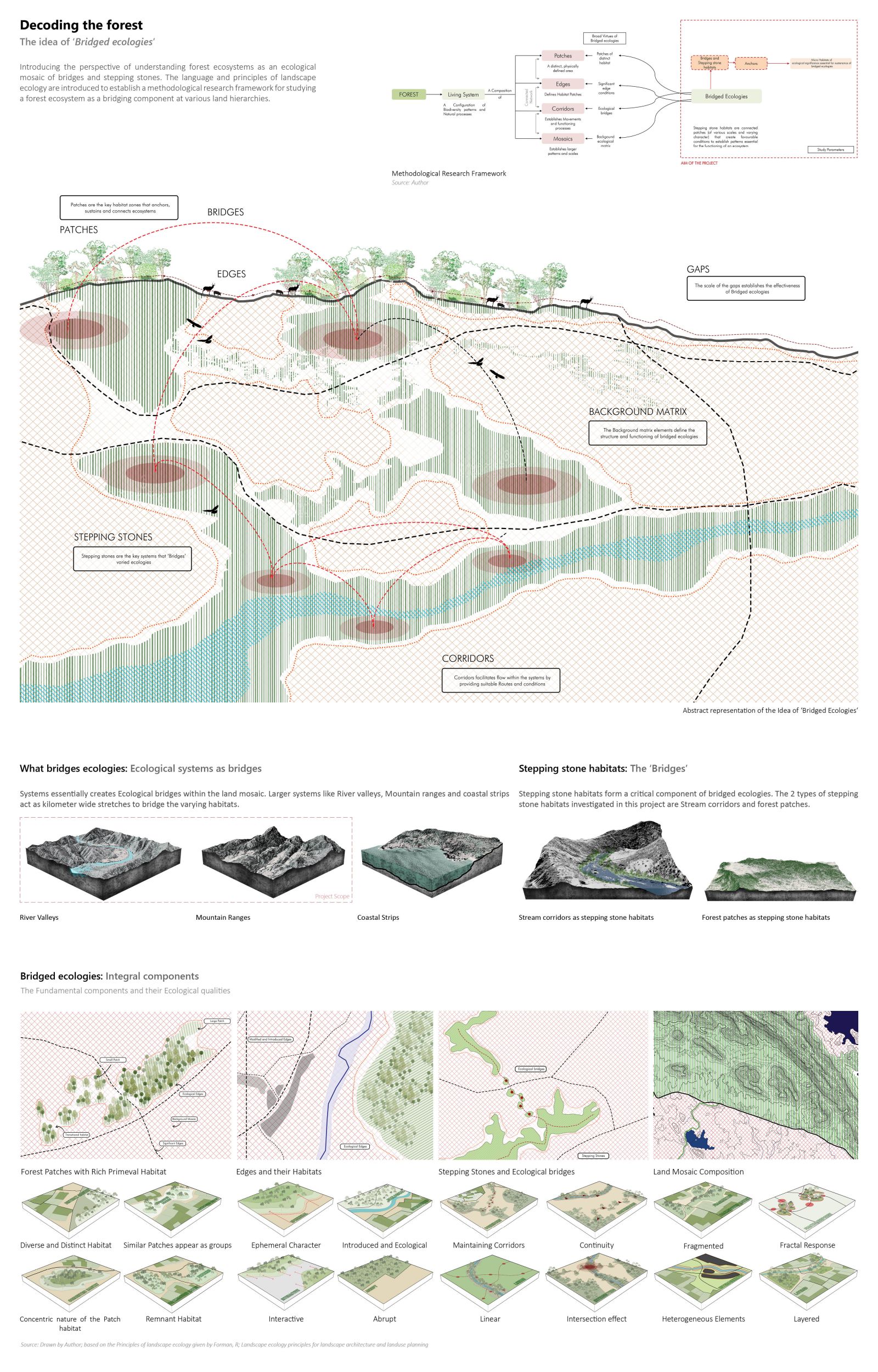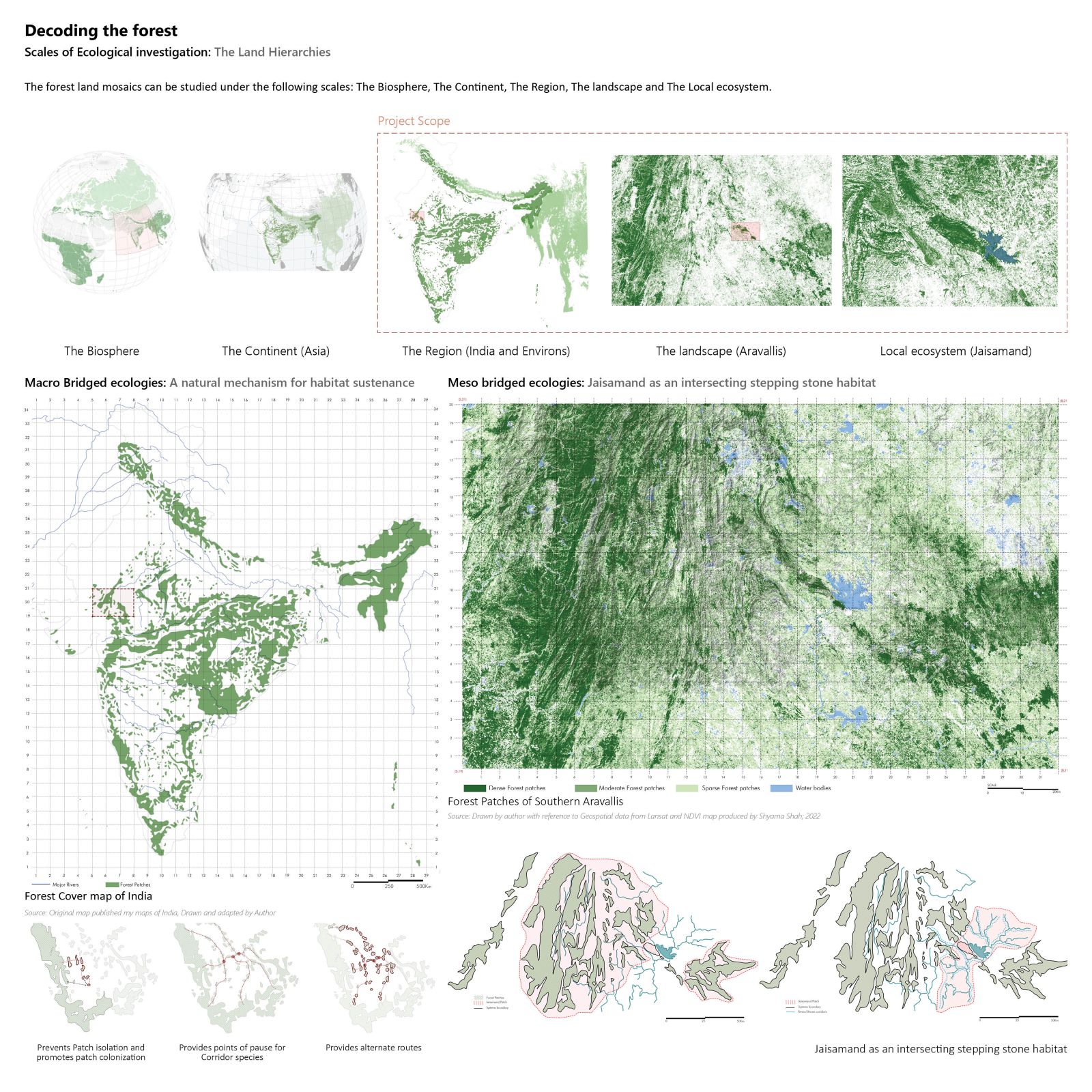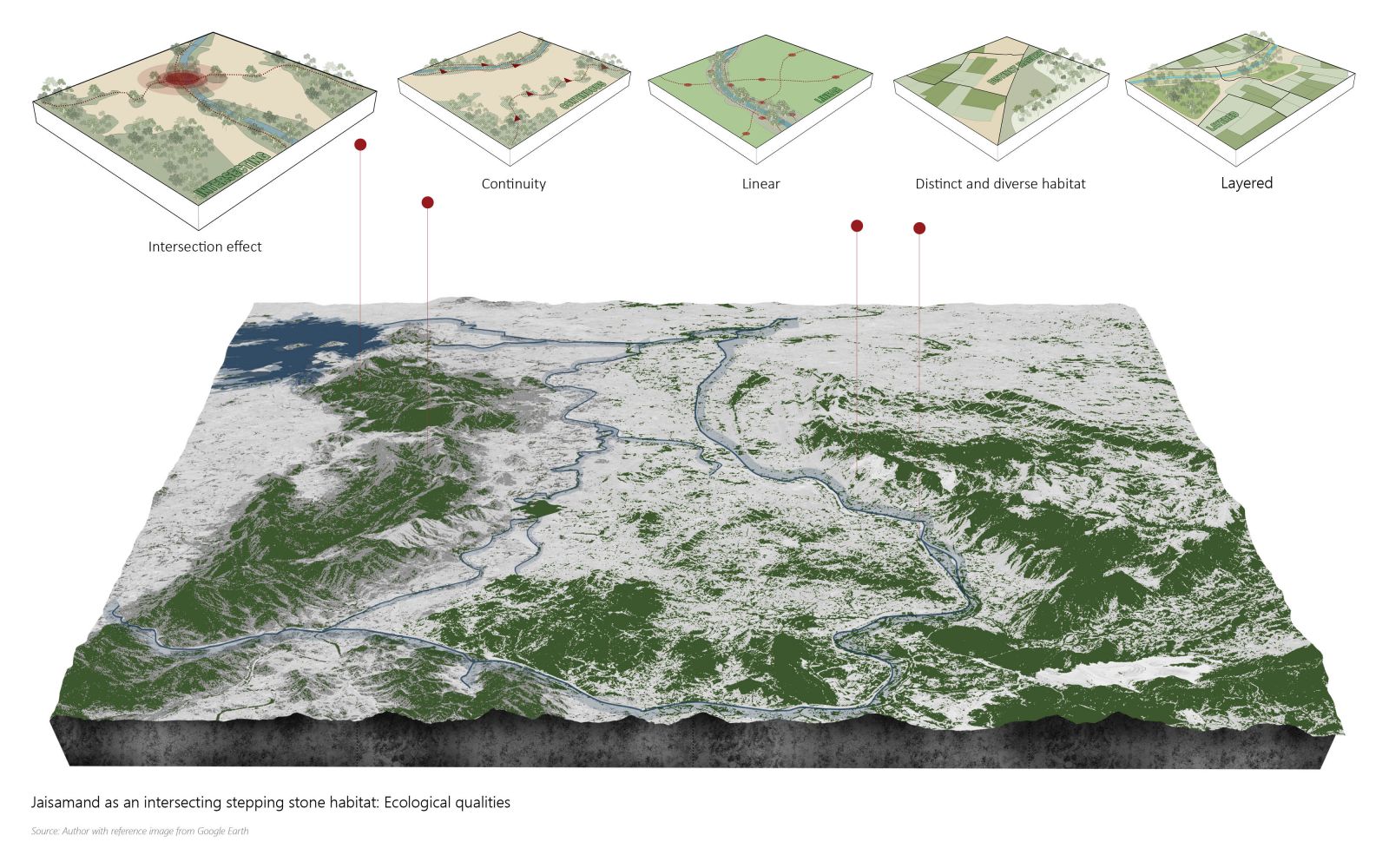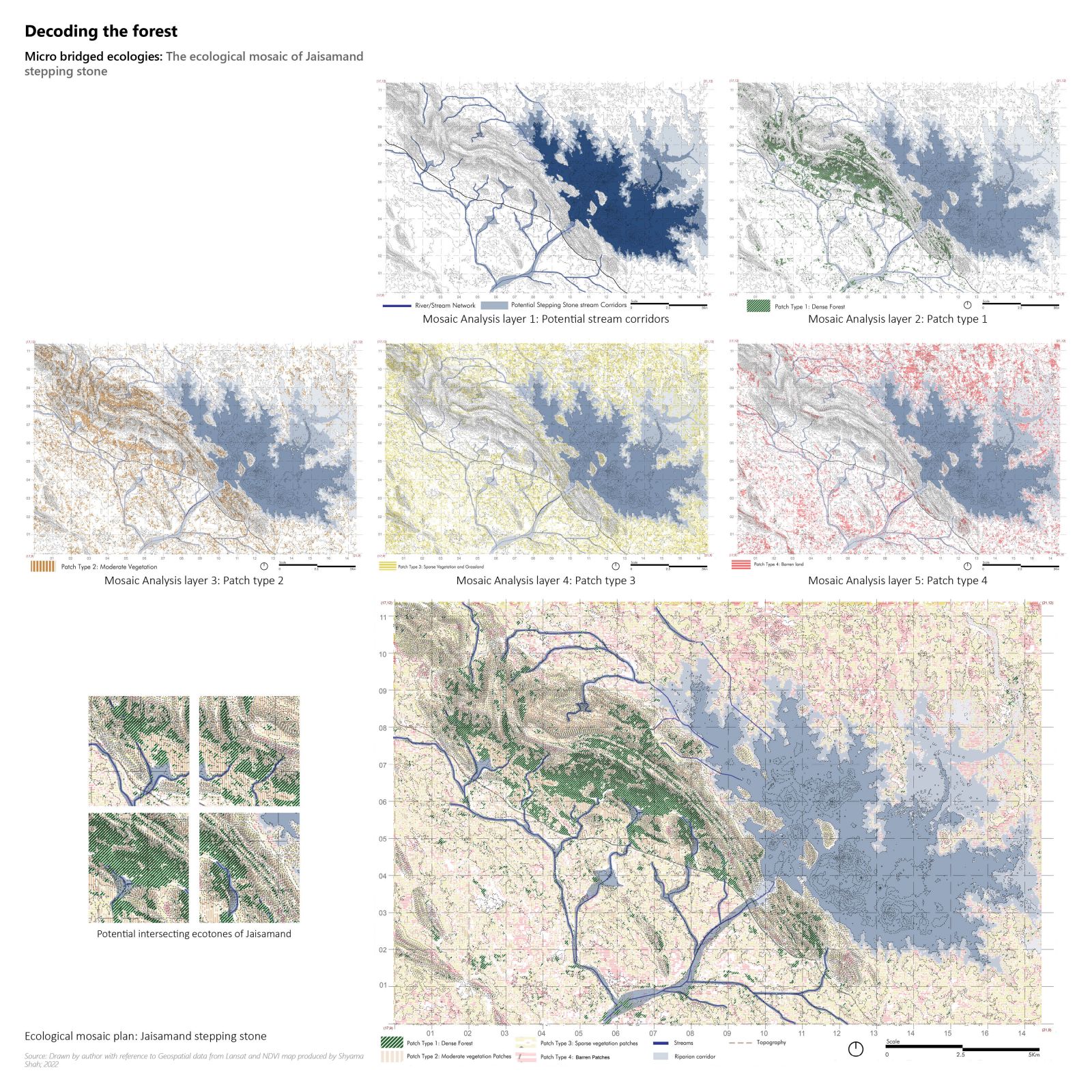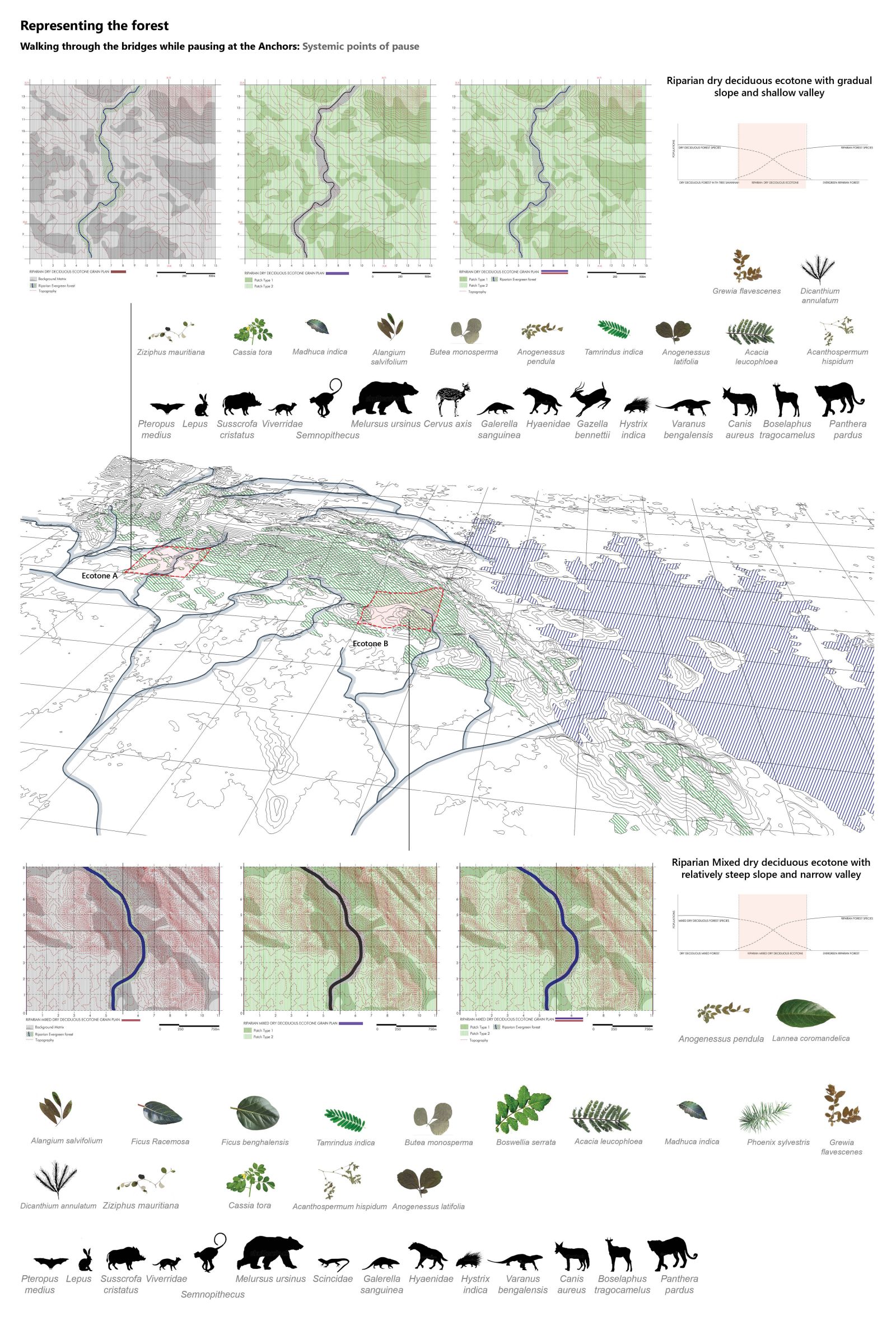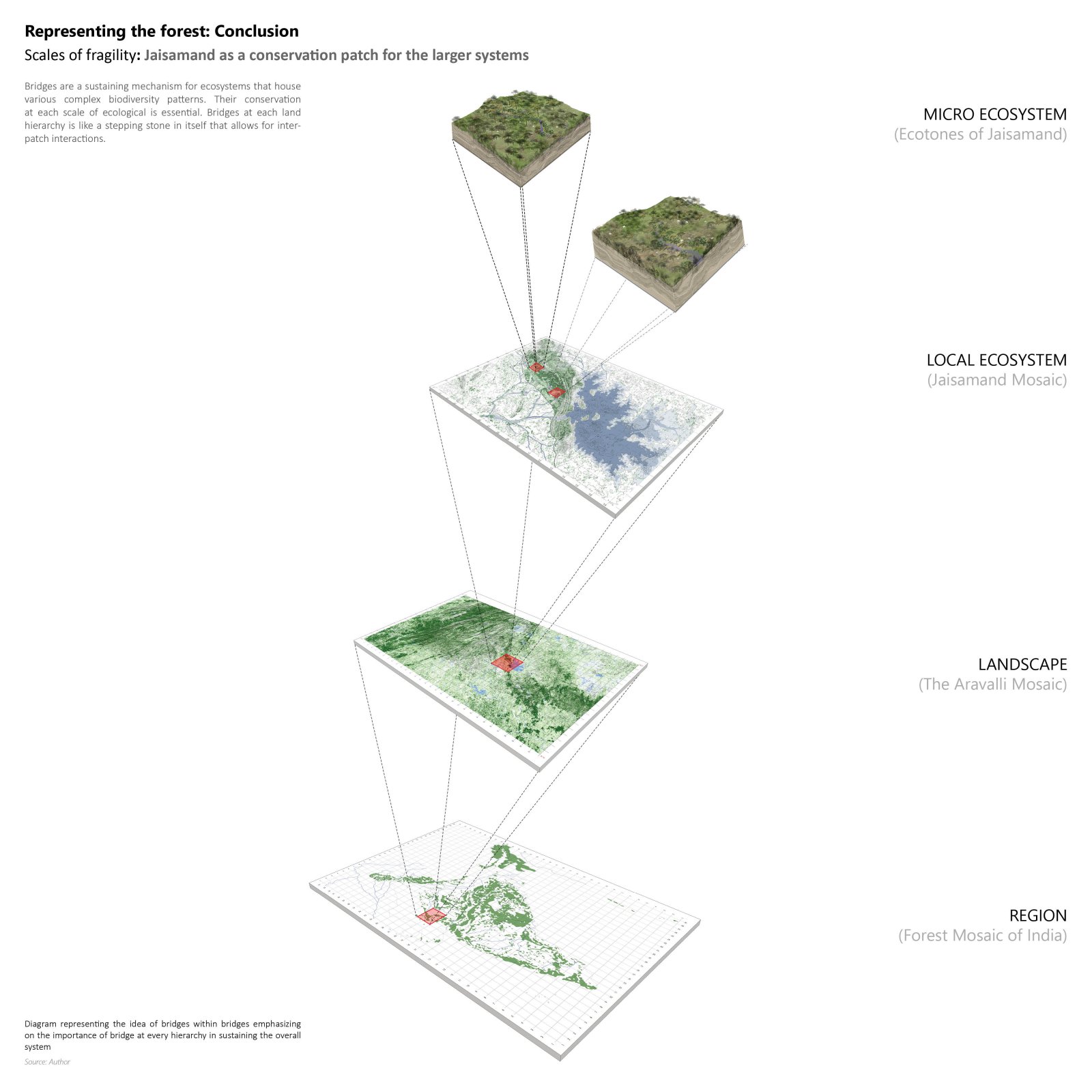Your browser is out-of-date!
For a richer surfing experience on our website, please update your browser. Update my browser now!
For a richer surfing experience on our website, please update your browser. Update my browser now!
Ecological systems are an interdependent network of various processes. One of the most remarkable features that we observe among our forests is the connection within systems. The ecological networks and processes weaved into the land mosaic presents us with the opportunity to look at forest ecosystems through the lens of landscape ecology to understand the significance of these as ‘Bridges’. The project aims to understand the significance of ecological bridges in the context of a Tropical dry deciduous forest within the Aravallis and establish the significance of various scales of Bridged Ecologies within the larger functioning of the regional land mosaic
View Additional Work